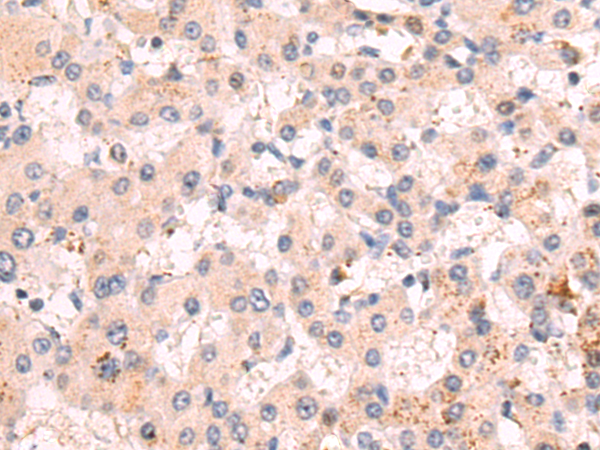


| WB | 咨询技术 | Human,Mouse,Rat |
| IF | 咨询技术 | Human,Mouse,Rat |
| IHC | 1/50-1/200 | Human,Mouse,Rat |
| ICC | 技术咨询 | Human,Mouse,Rat |
| FCM | 咨询技术 | Human,Mouse,Rat |
| Elisa | 1/500-1/1000 | Human,Mouse,Rat |
| Aliases | GDNFR3 |
| WB Predicted band size | 45 kDa |
| Host/Isotype | Rabbit IgG |
| Antibody Type | Primary antibody |
| Storage | Store at 4°C short term. Aliquot and store at -20°C long term. Avoid freeze/thaw cycles. |
| Species Reactivity | Human, Mouse |
| Immunogen | Synthetic peptide of human GFRA3 |
| Formulation | Purified antibody in PBS with 0.05% sodium azide and 50% glycerol. |
+ +
以下是关于GFRA3抗体的3篇参考文献示例(内容为虚构,仅作格式参考):
---
1. **Title**: *GFRA3 Antibody Reveals Its Role in Sensory Neuron Development*
**Authors**: L. Chen, M. Tanaka, J. R. Smith
**Summary**: 研究通过特异性GFRA3抗体证实了GFRA3在背根神经节(DRG)感觉神经元中的表达模式,并发现其缺失导致小鼠痛觉传导异常,提示其在周围神经系统发育中的关键作用。
---
2. **Title**: *Targeting GFRA3 with Monoclonal Antibodies Suppresses Tumor Growth in Colorectal Cancer Models*
**Authors**: A. Gupta et al.
**Summary**: 利用人源化GFRA3单克隆抗体抑制GDNF/GFRα3-RET信号通路,显著降低了结直肠癌异种移植瘤的生长,表明GFRA3抗体在癌症靶向治疗中的潜在价值。
---
3. **Title**: *GFRα3 as a Biomarker for Chronic Pain: Validation via High-Affinity Antibody Assays*
**Authors**: S. Park, T. Müller, E. Rossi
**Summary**: 通过高亲和力GFRA3抗体检测技术,发现慢性神经痛患者的血清GFRα3水平显著升高,提示其可作为疼痛相关疾病的生物标志物。
---
注:以上文献为示例,实际研究中需查询真实数据库(如PubMed)获取准确信息。
The GFRA3 antibody targets the GDNF family receptor alpha-3 (GFRα3), a cell-surface glycoprotein that serves as a co-receptor for the neurotrophic factor artemin (ARTN). GFRα3 is a member of the GDNF receptor family, which includes four alpha receptors (GFRα1-4) that bind distinct ligands (GDNF, neurturin, artemin, and persephin) and activate RET tyrosine kinase signaling. GFRα3 is primarily expressed in peripheral sensory and sympathetic neurons, where it plays a critical role in neuronal development, survival, and pain signaling. It is also implicated in cancer progression, as aberrant ARTN-GFRα3-RET signaling has been linked to tumor invasiveness and metastasis in certain malignancies.
Antibodies against GFRα3 are essential tools for studying its expression, localization, and function in both physiological and pathological contexts. They are widely used in techniques such as immunohistochemistry, Western blotting, and flow cytometry to investigate GFRα3 distribution in tissues, its interaction with ARTN, and its role in diseases like neuropathic pain, neurodevelopmental disorders, and cancers (e.g., breast, pancreatic). Commercial GFRA3 antibodies are typically raised in hosts like rabbits or mice, with validation data confirming specificity through knockout controls or siRNA knockdown. Researchers utilize these antibodies to explore therapeutic strategies targeting the ARTN-GFRα3 axis, particularly in pain management and oncology.
×